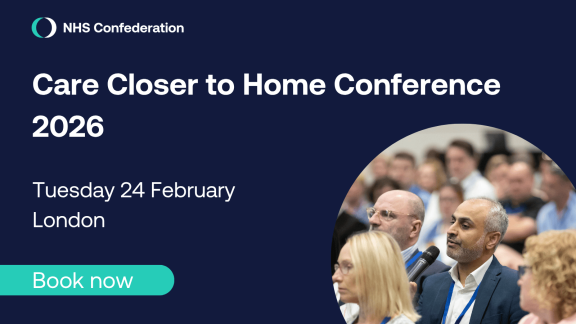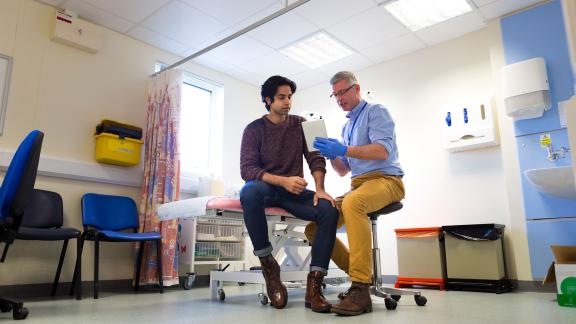The interface at Mid and South Essex NHS Foundation Trust

Overview
Mid and South Essex NHS Foundation Trust (MSEFT) has worked with system partners to implement several change projects aimed at prioritising interface between primary and secondary care teams.
What the organisation faced
It was identified that there was a gap between primary and secondary care that needed to be bridged, and that there needed to be a closer working between the two to address these problems.
Many patients were spending lengthy periods of time in phone queues trying to book blood tests.
GPs were finding it hard to access pathology laboratories for results or queries, and likewise lab staff were battling with long GP phone queues.
There was a lack of direct access to same day emergency teams (SDEC).
First contact practitioners (FCPs) working within primary care networks had no access for FCP to radiology requesting.
GPs were being asked to book repeat dual-energy X-ray absorptiometry (DEXA) scans for patients two years later despite having no recall process in primary care.
The number of complaints regarding transfer of workload to primary care was increasing, especially in relation to Med3 certificates (fit notes), post discharge investigations and referrals.
MSFET needed to facilitate ways of working that would avoid conflict or confusion between agencies; identify and react appropriately to problems in integrated working and enable the development of mutually acceptable solutions; and find common ground on which to build relationships and clinical symmetry.
Improvement
An interface email was introduced to which primary and secondary care send patient specific and general issues. From this, themes are collated and discussed at interface forums. As a result, specific issues have been resolved through collaborative working:
- MSEFT appointed a local GP as a medical director for interface and integration in post at the acute trust.
A new online booking system was implemented to allow patients to directly book phlebotomy, this has since been expanded to involve simple radiology investigations.
Direct dial numbers for pathology labs were distributed to improve GP access and GP bypass numbers were also shared with lab staff to expedite alert notifications.
A centralised SDEC phone number was introduced, providing direct access to medical, surgical, and frailty teams.
Ionising Radiation (Medical Exposure) Regulations (IRMER) training was conducted and requesting rights for radiology access were assigned.
A recall process for repeat DEXA scans was developed through the DEXA team.
Policies and guidelines for hospital staff on writing Med 3 certificates and discharge summaries were created, integrated into induction programmes, and communicated through various channels, including emails, grand rounds, and the trust website.
Regular senior level meetings with clinical directors and medical directors were established, along with a primary/secondary care collaborative group to foster better communication and joint resolution. Engaging with digital teams helped prioritise and streamline interface operations.
There is a now an interface programme team, led by the medical director for interface and integration as an SRO collaborating with senior teams within the ICB and the trust. This team has links into numerous groups, divisions and boards allowing for pre-empting of potential issue, escalation of problems and oversight over all projects which traverse the Interface.
The team works with five workstreams: troubleshooting, culture, education, links with other teams/meetings, communications, and engagement.
During the clinical reconfiguration programme, which occurred during the trust merger, the medical director for interface and integration implemented a ‘primary care pause’ which asked all teams to consider the impact of any pathway changes on primary care. It later became apparent that needed to be expanded to ensure ICB changes considered the impact on secondary care. there is now an ‘interface care pause’, which the interface programme team use to ensure any pathway changes have considered the clinical, financial, and patient journey impact on the wider system.
Outcomes
The implemented solutions led to several positive outcomes. Operational achievements included improved access to emergency teams, streamlined radiology requests, and an effective recall process for repeat DEXA scans.
The new online system significantly reduced patient waiting times for blood test bookings, and the distribution of direct dial numbers improved GP access to pathology labs. Communication and processes were improved with clear and accessible policies for Med3 certificates and discharge summaries, fostering better understanding and collaboration between primary and secondary care. The messages regarding working harmoniously across the interface, as well as use of all interface policies and procedures are embedded by repeated attendances at resident doctor training (as well as induction) and senior clinician training and touchpoints.
Future goals include developing easy-read discharge summaries with highlighted pertinent information, enabling electronic Med3 certificates, and creating webinars for improved primary-secondary care collaboration.
A workforce exchange programme is underway to improve mutual understanding of workloads and limitations, and efforts will continue to improve referral processes with information access through a directory of services (DOS). There are ongoing discussions regarding the best way to keep teams up to date with changes, including expanding the use of trust apps and intranets with GPs and ICB teams and vice versa.
An issues log is kept and reviewed on a regular basis. This informs the team of the problem areas for focus as well as understanding of noise vs volume and resolution.
Lessons learned
What went well:
An approachable chief medical officer meant senior buy in for the changes was easier to obtain. Recent support for a formalised interface programme as well as a dedicated team has enhanced and streamlined several projects.
A willingness to change.
Regular meetings with clinical directors.
Helpful outpatient/ digital/pathology teams providing support.
BMA guidance on how to write a Med 3 certificate but no policy.
What was challenging:
Limited time: initially much of the interface work was being done within other projects rather than having dedicated resource.
It became evident that there are misconceptions around the work that is done in primary and secondary care. Most secondary care consultants have spent either little or no time in primary care whereas, most primary care clinicians have spent time in hospital trusts prior to the pandemic, when the landscape was quite different. Due to this, there is a lack of understanding of the clinical and digital processes and the challenges we each face.
Information fatigue: it is difficult to ensure all staff are aware of policies and procedures in large, ever-changing organisations. There has been significant work dedicated to finding the correct ways of delivering these messages.
Organisational restructure: Across the system footprint there have been significant changes to structures and teams, resulting in stalling and reprioritisation of many projects.
Further information
For more detail on the information in this case study, please contact Dr Anoushka Luthra, medical director for interface and integration at MSEFT: anoushka.luthra@nhs.net



